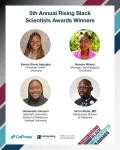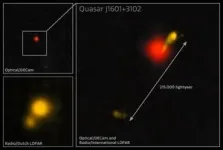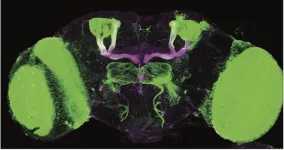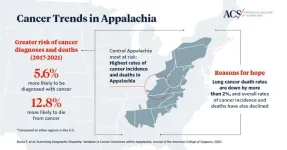Four early-career scientists share how they’ve harnessed features of their lives—from music to AI technology—to inspire their career and uplift communities. Each winner receives $10,000 for their science with essays published in the journal Cell
Cell Press, Cell Signaling Technology (CST), and the Elsevier Foundation are proud to announce the winners of the 5th annual Rising Black Scientists Awards: Jheannelle Johnson of Stanford University; Victor Ekuta, MD, of the Morehouse School of Medicine; Kenna Gloria Agbugba of Philander Smith University; and Nyasha Milanzi of Michigan Technological University.
This year saw hundreds of applicants from across the life, health, physical, earth, environmental, and data sciences. Essays from the winners and honorees appear in the journals Cell and iScience on February 06, 2025. The winning essays are:
The sounds of music: Tracing memories and pathways through research and resistance
Retooling science: Transforming tools into instruments of equity as a Black physician-scientist
Bridging worlds: A STEM journey from Nigeria to the U.S. and back
Inspiring the next generation of engineers and scientists to be champions of equitable change
The awards were originated in 2020 to break down barriers and create opportunities by providing visibility and funds to support talented Black scientists at the undergraduate, graduate, or postdoctoral levels in the life or medical sciences on their career journey. Now, at the 5th anniversary of the initiative, there have been over 25 scientists recognized, including honorable mentions, across the spectrum of science. Four winners are selected, two in the category of life and health sciences and two in the category of physical, earth and environmental, or data sciences. This year’s winners span the fields of medicine, engineering, and computer science.
“I’m thoroughly impressed by the advocacy and excellence of the winners of this year’s Rising Black Scientists Awards,” says John Pham, editor-in-chief of Cell. “From reading their stories, I’m confident that they will all make important scientific contributions and that they will be agents of positive change. I hope that winning the award will be helpful to them on their journeys, and that their stories will inspire others.”
The awards are conducted in partnership with the Elsevier Foundation and Cell Signaling Technology, whose contributions provide support and funding for the award package. The winning essays are published in the journal Cell, and the winners receive $10,000 to support their science and a $500 travel grant. Because of the volume of outstanding submissions, we also recognize four honorable mentions who receive $500 each. Their essays are published in the interdisciplinary open access journal iScience.
“I’m so inspired by the depth and breadth of topics these essays cover and the personal stories behind them,” says Ylann Schemm, Executive Director, the Elsevier Foundation. “Giving much needed recognition to Black scientists is an integral part of the Elsevier Foundation’s mission to encourage a more inclusive research ecosystem. We consider it essential to celebrate excellence and ambition during these critical early phases of their journeys as scientists.”
“At CST, we believe that actions speak louder than words,” says Margaret Murray, VP of Global Human Resources at CST. “Our support for the Rising Black Scientists Awards demonstrates our dedication to creating meaningful change and building a more inclusive scientific community. We are excited to witness the groundbreaking contributions these young scientists will make.”
Discovering the notes of Alzheimer’s disease
Jheannelle Johnson (@JheannelleJ) is one of the Rising Black Scientists Awards’ winners in the category of life and health sciences. After receiving her bachelor’s at Howard University, she’s now completing a Neurodegeneration Computational Fellowship at Stanford University, where her work centers on understanding cell vulnerability in Alzheimer’s disease. She also serves as the development director for the non-profit organization Black in Neuro, whose aim is to empower Black scholars and professionals in neuroscience. In her essay “The sounds of music: Tracing memories and pathways through research and resistance,” she shares how music offered her a window to connect with her grandmother suffering from Alzheimer’s disease, and this musical connection sparked her journey into studying both the molecular and societal underpinnings of the disease.
“Winning the Rising Black Scientists Award is an incredible honor that I want to share with my community, whose wisdom, guidance, and passion have shaped my journey,” says Johnson. “I am highly grateful to Cell, the Academic Advisory Board, the Cell Press editorial team, and Cell Signaling Technology for allowing me to highlight my work and my mission that drives me daily. It reaffirms my belief in the power of investing in underrepresented communities in science. For me, this award encourages me to continue the mission because not only do our voices matter, but they are essential to shaping the field forward.”
Science as a tool for change
The other award recipient in the category of life and health sciences is neurology resident physician Victor Ekuta (@victorekuta) for his essay “Retooling science: Transforming tools into instruments of equity as a Black physician-scientist.” In it, he describes how science and identity can both be used to heal or harm and how he used these “tools” to serve his community for the better. He is currently a neurology resident at the Morehouse School of Medicine and holds several scholarly appointments, including as a postdoctoral research fellow and Clark Scholar at Penn Alzheimer’s Disease Research Center and as Health Equity Scholar with the Alzheimer’s Disease Neuroimaging Initiative (ADNI). His aim is to specialize in academic neurology as a physician-scientist-advocate.
“Winning this award is not just a personal achievement—it’s a testament to the power of resilience, representation, and the pursuit of equity in science and medicine,” says Ekuta. “It reaffirms that our stories, our voices, and our work as Black scientists matter and have the power to transform tools into instruments of justice. I carry this honor forward with a renewed commitment to advancing brain health equity and uplifting those who come after me.”
Developing AI to help educate
Kenna Gloria Agbugba receives the award in the physical, earth and environmental, or data sciences category. In her essay, “Bridging worlds: A STEM journey from Nigeria to the U.S. and back,” Agbugba shares how she wants to take the skills learned from her research in AI technology to build tools for supporting the advancement of students in her homeland. As a computer science undergraduate at Philander Smith University, she has co-led a team to design an award-winning AI-driven literacy-support prototype to assist students in Detroit and has worked on a National Science Foundation project to develop an intelligent learning support AI-powered iOS app.
“Firstly, I want to thank the God who sees me (El-Roi), my family, and my friends for their unending support, as well as Cell Press for this incredible honor and for celebrating diversity in such a meaningful way,” says Agbugba. “Winning the RBSA is a moment of triumph that validates the resilience and effort I’ve put into my journey in STEM so far, especially during moments of self-doubt—even when applying for this award. I’m so glad I pushed through and applied because this award is more than just a personal milestone; it’s a push forward and an opportunity to inspire others like me to overcome self-doubt, believe in their work, and keep moving forward with resilience.”
Engineering for equitable solutions
Our other recipient in the physical, earth and environmental, or data sciences category is Nyasha Milanzi (@n_milanzi). Trained as an electrical engineer at Ashesi University in Ghana, she has developed affordable, sustainable devices such as an air pollution detectors and solar cookers. She recently defended her master’s thesis at Michigan Technological University, where her research centered on building just energy transitions in underserved communities. In her essay, “Inspiring the next generation of engineers and scientists to be champions of equitable change,” she relays her mission of climate action by building cross-disciplinary approaches to address the public health needs of our most vulnerable communities.
“It feels incredible that my essay highlights the equity work my parents championed in making education accessible to young people from marginalized backgrounds—a mission that directly connects to my journey in environmental justice,” says Milzani. “Receiving this award not only recognizes my efforts in the environmental field but also serves as a testament to the invaluable contributions of Black international students to science and engineering. I hope it inspires others to confidently pursue unconventional careers that uplift frontline communities and drive meaningful change.”
Honorable mentions recognized with publication in iScience
In recognition that the remarkable talent of the award applicants is not limited to four winners, an additional four honorable mentions were also selected this year, whose essays appear in iScience. The selected honorees for the life or health sciences category are post-baccalaureate Daphna Fertil of the National Institute of Biomedical Imaging and Bioengineering for her essay “Healing through innovation: Advancing health equity from lab to community” and MD PhD student Darnell K. Adrian Williams Jr. of Albert Einstein College of Medicine for his essay “The Sprained Mind.” The selected honorees for the physical, data, or earth and environmental sciences are PhD student Arona Bender of Duke University for her essay “Beneath the surface: A journey through hidden waters” and undergraduate Efemena Johnson of George Mason University for her essay “From Nigeria to innovation: A vision for inclusive science.”
###
Cell Press (@CellPressNews), an imprint of Elsevier, is a leading publisher of scientific research and reviews, with over 50 scientific journals across the life, physical, earth, and health sciences. We seek to support the scientific community and inspire future directions in research with our editorial excellence, commitment to innovation, unparalleled reach and visibility, and passion for advocacy. Visit http://www.cell.com/.
Cell Signaling Technology (CST) is a different kind of life sciences company—one founded, owned, and run by active research scientists, with the highest standards of product and service quality, technological innovation, and scientific rigor. Founded in 1999 and headquartered in Danvers, Massachusetts, USA, CST employs over 600 people worldwide. We consistently provide fellow scientists around the globe with best-in-class products and services to fuel their quests for discovery. CST is a company of caring people driven by a devotion to facilitating good science—a company committed to doing the right thing for our customers, our communities, and our planet. cellsignal.com
The Elsevier Foundation contributes over $1.5 million a year to non-profit organizations through partnerships which incubate new approaches, highlight inequities, and catalyze change toward the UN Sustainable Development Goals. Funded by Elsevier, a global information analytics company specializing in science and health, the Elsevier Foundation is part of Elsevier’s wider corporate responsibility program. By leveraging Elsevier’s networks and unique insights in content, data, and analytics, the Elsevier Foundation is able to expand its impact in gender, health, climate action, and reduced inequalities. Since 2005, the Elsevier Foundation has contributed over $16 million in grants to over 100 partners in 70 countries around the world. In addition, the Elsevier Foundation offers a special fund to support disaster relief, matching employees’ donations and volunteering to enable employees to work closely with Foundation partners and support their communities.
END






